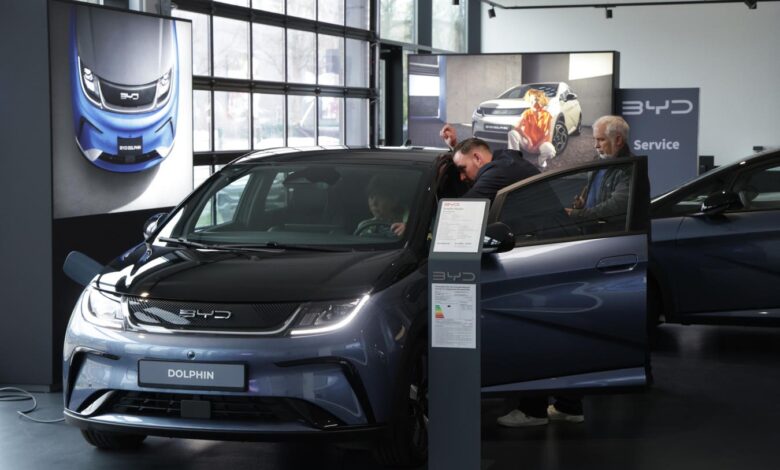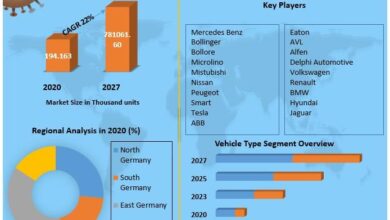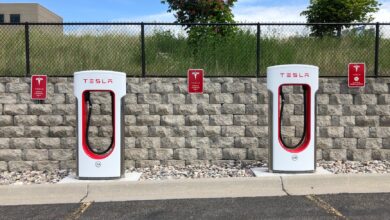Can AI Make It A Reality?

A BYD Dolphin electric car at a dealership in Berlin, Germany. The vehicle retails for almost double … [+]
The quest for a $25,000 electric vehicle has become a sort of holy grail in the automotive industry. While promises abound, auto companies like Tesla, Ford, Stellantis and others announce their intentions, the reality of a truly affordable EV in the US/EU remains elusive for now. While some Chinese OEMs have achieved lower prices, the combination of trade tariffs and high margins can still lead to higher costs for Western consumers. There are multiple ideas on what’s needed to reduce the price, but so far no one has got there. What is the “Model T” moment for the EV? Can the convergence of AI and robotics help drive down the price? They’re going to have to.
The Importance of the $25,000 Price Point
The current EV market (averaging $50,000 per vehicle) largely caters to early adopters and premium segments who’ve taken advantage of generous federal and state subsidies and remain a major barrier to the mass market of price sensitive buyers. To be clear, the average new gasoline cars (averaging $40,000) are mostly out of reach to these segments too. Breaking the $25,000 barrier is crucial for several reasons:
- Mass Market Appeal: As global car sales dip, this opens the door to a wider range of consumers, especially in the larger budget-conscious segments. Switching to electric also translates to substantial yearly savings compared to gasoline ($1,000+ on average), making EVs a more financially attractive option for the masses.
- Market Share: The global fleet of passenger cars currently stands at around 1.2 billion, and the EV fleet is only a fraction of that. While many countries have passed the 10% fleet threshold, a $25,000 EV could potentially double or even triple the current market share in the US and Europe. This could translate to millions of additional EV sales annually, significantly impacting the overall new car market.
- Green Transition: An EV in this price point would accelerate the transition to more sustainable transportation options. More than half of our transport emissions are from driving cars. EVs coupled with pubic transport, e-bikes and their supporting infrastructure would have big positive impacts on local air quality, regional greenhouse gas emissions, and national energy security.
The Roadblocks to Affordability
Achieving a $25,000 price point is clearly not straight forward. It requires some major changes in how EVs are made and their key components. Some of these are easier said than done:
- Battery and Motor Technology: As the biggest ticket items of an EV, advancements in battery and motor technology optimization, efficiency and energy density are all critical paths to lower production costs.
- Simplified Design and Manufacturing: Focusing on efficient chassis assembly techniques and eliminating unnecessary complexity and processes can significantly reduce manufacturing time, materials and costs.
- Economies of Scale: Higher-volume production and tighter supply chains allows for cost reduction through shared resources, transparency and optimized processes.
- Form Factor and Size: In the ever-growing race for bigger vehicles, “car bloat” needs to be reversed. We need smaller, lighter and more efficient form factors. That may be hard for some to swallow, but downsizing has been the trend for many products -yet cars have been immune to it so far.
Can AI, Robotics, and Blockchain Help?
Emerging technologies like AI, robotics, and blockchain have the potential to transform the automotive industry and play a crucial role in achieving the $25,000 EV dream. As these technologies converge, they open key areas of opportunity that some innovators have started exploring. Here are just some that are being incorporated:
- AI Design and Engineering: Generative AI can be used to optimize battery, motor and vehicle design, materials and assembly while also enabling rapid simulation, prototyping and development cycles.
- Assembly and Quality Control: AI-powered robots can automate repetitive tasks on assembly lines, optimize processes, production speeds and reduce downtime, performing automated inspections and reducing human error.
- Supply Chain Management: AI-powered blockchain optimizes logistics and inventory, ensuring timely deliveries and reducing waste while tracking materials and components and enabling secure data sharing.
AI designed batteries, motors and AI powered Robotics are going to be essential to assemble the $25K … [+]
Who Can Deliver to $25,000 EV?
The race to deliver the $25,000 EV is heating up. While Tesla has been the pioneer in the EV space, traditional OEMs like Stellantis and Chinese manufacturers are making significant strides. Chinese OEMs have had a cost advantage due to lower labor costs and strong government support- resulting in the current geopolitical trade issues. BYD, for example, has already launched several affordable EVs in the Chinese and adjacent markets but none so far in the US or Europe. US and European OEMs have established brands and distribution networks, but need to adapt their manufacturing processes for cost reduction. Ford, for instance, has announced plans for an affordable EV platform that could underpin multiple models. Korean and Japanese OEMs have built a strong track record in quality and efficiency, but both need to drive down prices.
Mass Adoption Requires A Reliable Charging Network
Just like smartphones, they’re only as good as the networks they run off. A robust charging network is vital for widespread EV adoption. Unlike in Europe and China, with the exception of Tesla, US governments and companies have been slow to deliver reliable charging infrastructure. Significant investment is needed and utilities play a key role by ensuring the grid can handle the increased electricity demand while building out renewable energy storage and sources for sustainable charging.
Seven major automakers announced plans to increase the number of high-powered electric vehicle … [+]
Beyond the Car: Multi-modal Transport Is The Future
While EVs offer a better option to gasoline cars, a truly sustainable transportation system requires a multi-modal approach. This includes expanding and improving public transportation systems to reduce reliance on personal vehicles, especially in urban areas. Investing in safe and convenient cycling infrastructure provides more people to choose bikes for shorter trips within cities. Combining public transport, e-bikes, and EVs creates a great synergy of electric transport options. This can significantly reduce reliance on personal vehicles, leading to a substantial decrease in pollution emissions and a more sustainable transportation system.
Overall, a $25,000 EV would be a significant game-changer for the automotive industry and the average consumer. It would make EVs more accessible and affordable, leading to a major shift towards more sustainable transportation. The integration of AI, robotics, and blockchain holds immense potential to accelerate this journey and make the $25,000 EV a reality. The OEMs who can effectively leverage these technologies and collaborate with forward thinking governments and utilities to ensure a robust electrified multi-modal network will be best positioned to lead the charge towards a more sustainable mobility landscape.
The combination of electric bikes, buses, cars and trains is the future of affordable and … [+]



